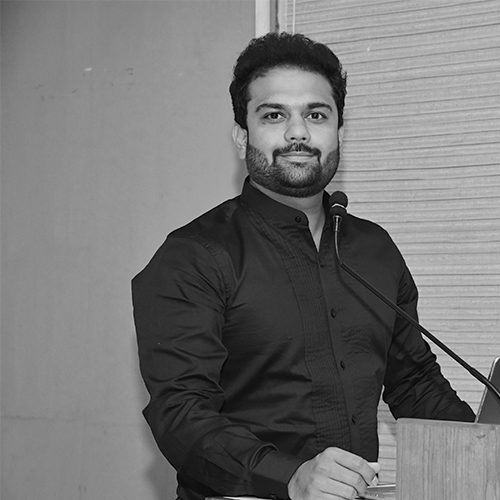New Media and the Young (part-5)

Current digital media, or the ‘New Media’, provides entry to an extraordinary experience of swiftness in communication, storage of data and access to virtual and immersive experiences. The youth take to new technologies more easily than older adults do. However, studies show that Social Media affect boys and girls differently. Positive connections have been traced between depressive symptoms and internet addiction, as well as between low self-esteem and social media usage, especially among young women.
In our concluding article we shall look into the intervention techniques to deal with the unfavourable impact of social media.
Initiatives by Community and Educational Institutions
The Wild West Web campaign was created to request the UK Government to protect children from abuse and harmful content on social media, by regulating social networks (Swerling, 2019).
The Indian government too has joined several nations’ bid to regulate social media (Trivedi, 2019).
After the public uproar over Molly Russell’s death and the mediation of the health secretary, Matt Hancock, Instagram announced that it would ban all graphic self-harm images. It also mentioned other measures it would take to shield children from being exposed to dangerous material. (Marsh, 2019).
Social media for social change and empowerment of Girls and the youth -
Social media itself can be used to assist young girls, as well as boys, to deal with problematic online social interactions and cope with life in general. Since social media has proven to be easily accessible and profoundly influential, several groups to help women and children have been created online. These groups have been created by experts and also by teenagers themselves. They reach out to others and help them learn new skills, find space to express themselves – their passions, needs and grievances. There are groups that allow the user to report any abuse they face online. For instance, ‘Teen Line’ is an online platform aimed at connecting with other teens, listening to them and helping them.
Several online initiatives have emerged which attempt to educate the adolescent female user about methods and strategies of dealing with online conflicts. Platforms like ‘#BUILTBYGIRLS’, WriteGirl, Girls On The Run, and many more are aimed to empower girls to learn technology, get academic degrees, and learn life skills. Girl Up is a campaign by the United Nations to help adolescent girls stay safe, healthy and educated as they believe that girls are powerful and can transform communities. The GirlGaze network cuts through boundaries of nation, race, culture, religion, sexual orientation and economic background to help young girls determine their own identity and allows them to break away from polarized stereotypes through their self-expression (Neal, 2017).
In India too, there are several social media platforms created to help women and children, which reach out to women, attempting to give them the space to share their professional and personal experiences, ideas, dreams, problems and challenges, with other women who too share their views and suggestions in a non-judgmental manner.
There are several such groups for adolescent girls too. For instance, Nike Foundation and its partners started its first Girl Effect in 2004. Its aim was to uplift adolescent girls and make them healthy, confident and self-reliant. Its first youth programme ChhaaJaa (Go Forth and Shine) was launched in India in October 2019. The foundation uses digital media to entertain and inform adolescent girls to understand themselves, their relationships and life challenges and their choices. It allows young girls to talk about and understand topics that could be considered embarrassing or taboo (Srivastav, 2019). An initiative worth emulating was begun by the Bombay Scottish School in Mumbai, India. The students of the High School brought together students and collected data from about twenty schools and successfully created a curriculum to help train students to deal with cyberbullying and other problems that could be faced while interacting on online social networks (Borwankar, 2019). This model should be followed by schools across the country if we want our young girls to maintain a healthy interaction online.
Support Groups - One of the greatest deficiencies in educational institutions is the lack of a support system, a place or cell to which children can turn to in order to share their unpleasant experiences or find answers to their queries. A support group that fills this gap could also help to ensure that untoward online behaviour does not occur as far as possible. This can only be feasible if the support group includes influential members of the student body, parents of school students, psychologists, teachers and staff of the concerned schools. Such a group could not only help to counsel victims but also help to spread awareness of the problems of social media interaction while creating and maintaining an atmosphere of empathy and respect at home as well as in the classroom.
Initiatives by Individual and Family
Instances of cyber-bullying, for example, often pass unnoticed by parents. 90% of adolescent respondents “reported that they did not tell an adult about cyberbullying” (Juvonen& Gross, 2008). This could be nipped in the bud if parents monitored the interactions of their children online both physically as well as through in built applications.
Sensitivity Training - While the focus has been on safeguarding, protecting and helping children to be aware of possible dangers – both online and offline, the more crucial question is: why do children and adults indulge in inappropriate and often unwanted behaviour and what can be done to prevent it? Just as Positive Psychology helps children to focus and strengthen their capabilities, develop their imagination and creativity and make them more social; Sensitivity Training Programmes would help children have a better understanding of people around them. These programmes can make them less judgmental, more respectful, caring, accommodating and grounded.
Sensitivity cannot be inculcated in isolation or in pockets. It would be less effective if for example we attempted to train children to be sensitive only to gender or race. A sense of compassion can only be inculcated as an overall, and fundamental change in perspective; an overhauling of attitudes that makes the student develop a comprehensive set of values making him or her basically sensitive towards the world, nature, race, gender, caste, religion etc in general. These values could eventually help the ‘future adults’ to naturally refrain from undesirable activities- activities that could be detrimental to others who are different from them. These differences could be in looks, gender, caste, community, religion and even in abilities. The imbibing of values needs to be extended to understanding the world we live in. It is important for children to understand and respect nature and also learn some elementary skills.
A point in case is the compulsory community work and farming activities at the CMS Lower Primary School in Muhamma, a town in the Alappuzha district of Kerala. This school, which was on the verge of closure, today has 700 students, having included innovative teaching methods such as farming (Zachariah, 2020). Including farming in the curriculum of a primary school gives a practical understanding of science to the children (specifically, chemistry and botany). It helps them to understand how nature works and how all creatures need nature and nurture to survive. Thus, while the activity itself does not appear to be directly linked to sensitivity training, it indirectly inculcates a set of basic humane values in the child, making him or her more rooted, practical, providing a sense of responsibility towards the community, a desire to contribute to society and a sense of purpose in life. It also helps in building team spirit. In this way, a syllabus would need to be developed, which builds the all-round empathy of the child and extends into all his or her activities and interactions.
Inclusion of Media Literacy training in the School Syllabus - Khaziret al had found that young women would benefit immensely through media literacy training (2016). Specific programmes need to be conducted both online and offline to increase online literacy among young women. They could, for instance, be helped to understand how online images prevent them from having a realistic understanding of their body and how it hampers their psychosocial development (Walker et al, 2019).
Since a sizeable population of the youth spend their time consuming content that has been uploaded to social media, it is only logical that social networking sites could be used to improve the media literacy of young girls. It is now about time that the government, educational institutions and NGOs combine their efforts and create content especially made for social media and specifically target young girls, educating them about the do’s and don’ts of using social networks and the internet. This content, then, needs to be added as a mandatory part of the syllabus at schools, which should include the following:
- Detailed discussion of case studies of online social interactions.
- Research into actual incidents that are usually encountered on the web.
- An in-depth understanding of the laws and legalities that govern and control digital social media.
- Threats and opportunities of web resources and social networks.
- Awareness of the rules of netiquette.
- Understanding the unwritten rules of online interaction and behaviour.
- Role-playing as a form of learning.
- Understanding the impact of social isolation, body-shaming and ‘trolling’ online.
- Knowledge of basic computer programming, existing safeguards and of contemporary software tools that could be used to identify and ward off cyberbullying behaviour, criminal elements on the web and unacceptable actions on social networks.
- Exercises that help to develop in the child the ability to identify fake news, malicious posts and misleading advertising, both online as well as offline.
As we have now seen, although the benefits of social networking sites are immense, they can be enjoyed when used with desired prudence.







